News
Best Guide to Choosing Refrigeration Equipment for Different Commercial Kitchens
THE BEST REFRIGERATION EQUIPMENT FOR DIFFERENT COMMERCIAL KITCHENS
In every commercial kitchen, refrigeration isn’t merely about chilling food—it’s the guardian of freshness, the cornerstone of food safety, and a driver of operational efficiency. From bustling restaurants and fast casual to high‐volume food processing plants, the right commercial refrigeration equipment can dramatically extend shelf life, cut waste, and ensure every dish reaches the guest at peak quality. As the hospitality industry pivots toward energy conservation and smart automation, selecting the perfect commercial refrigerator becomes as much a matter of cutting‐edge technology as savvy business strategy. This article unpacks how to tailor your refrigeration solution to diverse kitchen environments and highlights the science and trends behind today’s most innovative storage systems.
COMMERCIAL REFRIGERATION VS HOME UNIT: KEY DIFFERENCES
At its core, the difference between refrigeration equipment commercial and residential units lies in a technological generational gap between industrial‐grade design and consumer‐grade products.
In terms of structural strength, commercial units employ thickened steel frames and dual‐layer polyurethane foam insulation, boosting corrosion resistance by over three times and withstanding hundreds of door cycles daily—whereas household refrigerators typically rely on single‐layer sheet‐metal construction that can’t endure the intense use of a refrigerating equipment environment.
The temperature‐control systems differ even more dramatically: commercial freezers integrate PID (Proportional‐Integral‐Derivative) controllers to maintain temperature fluctuations within ±0.3 °C—preventing cellular damage in stored ingredients, while residential units usually use mechanical thermostats with accuracies no better than ±2 °C.
Regarding cooling output efficiency, refrigeration equipment commercial compressors utilize dual‐cylinder or multi‐cylinder designs that sustain full‐load operation even at –25 °C; by contrast, single‐cylinder compressors in home freezers lose about 40% efficiency at –18 °C.
Moreover, commercial condensers are fitted with dedicated cooling fans and dust filters to ensure continuous heat dissipation in greasy kitchen environments—features almost never found in residential appliances.
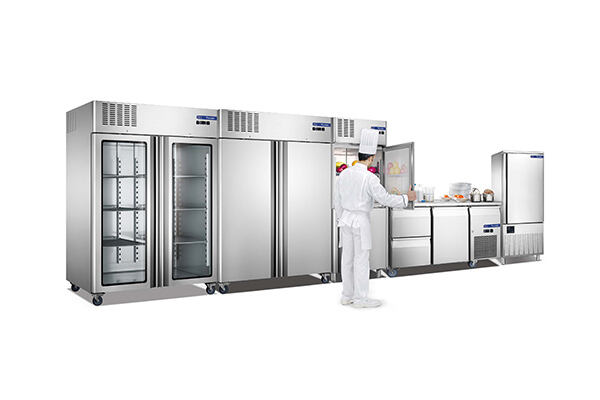
BEST REFRIGERATION EQUIPMENT FOR RESTAURANTS
-
Upright Refrigerators
By using a vertical, multi‐tiered layout, upright units boost storage density by about 50%. Their built‐in evaporator coils are concealed within the cabinet walls, preventing frost buildup from blocking retrieval pathways. -
Walk‑In Freezers
These employ forced‐air circulation from overhead vents to establish thermal stratification—maintaining a 0 °C to 4 °C zone for refrigeration and –18 °C to –25 °C for freezing—ideal for zoned storage and bulk ingredient management. -
Undercounter Refrigerators
In front‐of‐house prep areas, these integrate a compact refrigeration module beneath a stainless‐steel countertop. They both preserve prepped ingredients and serve as temporary workstations, increasing usable space by roughly 30%.
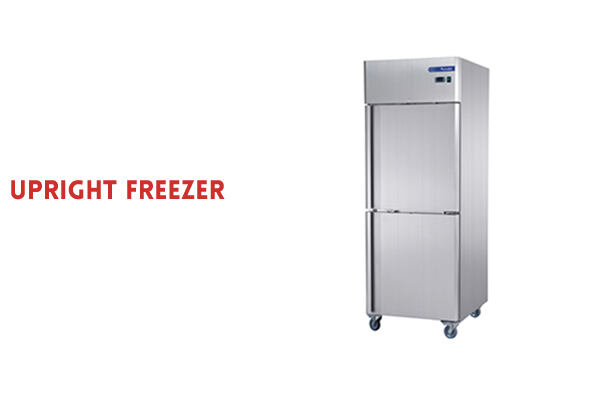
IDEAL REFRIGERATION SOLUTIONS FOR SMALL HOTELS
Small hotels often grapple with dual challenges of menu diversity and noise sensitivity. Modular dual‑zone refrigeration units allow flexible switching between fresh storage (2–6 °C) and frozen preservation (–12 °C to –18 °C), adapting to varied culinary demands. For banquet leftovers, commercial refrigeration equipment featuring jet‐cooling technology can slash temperatures from 60 °C to –40 °C within 90 minutes, bypassing the bacterial “danger zone” (4 °C–60 °C). During quiet hours, integrated acoustic dampeners reduce compressor speeds below 800 RPM, capping noise at 45 dB—quieter than a whisper. Forward‐thinking refrigeration equipment suppliers now offer units with AI‐driven load prediction, automatically adjusting cooling intensity based on inventory levels.
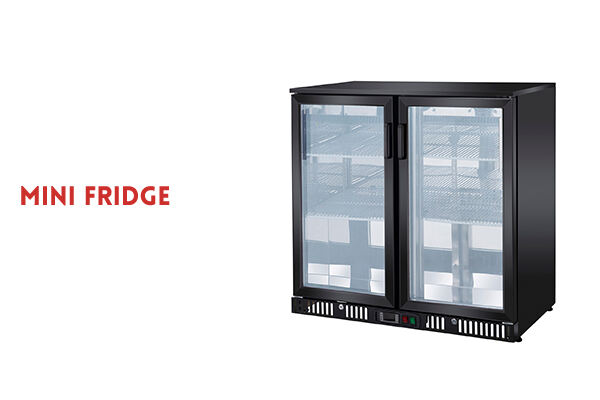
TOP REFRIGERATION EQUIPMENT FOR FAST CASUAL DINING
The fast‐food industry demands seamless integration of preparation, display, and sales. Commercial refrigeration equipment like air‐curtain display cases creates an invisible thermal barrier with 0.5 m/s vertical airflow, maintaining a stable 3 °C–5 °C internal temperature even when fully open, reducing cold air loss by 70% compared to conventional units. Refrigerated prep tables, equipped with sub‑counter evaporators, keep work surfaces at 5 °C, ensuring ingredients remain within HACCP safety parameters during assembly. Partnering with a reliable refrigeration equipment supplier ensures access to modular designs that align with high-speed workflows.
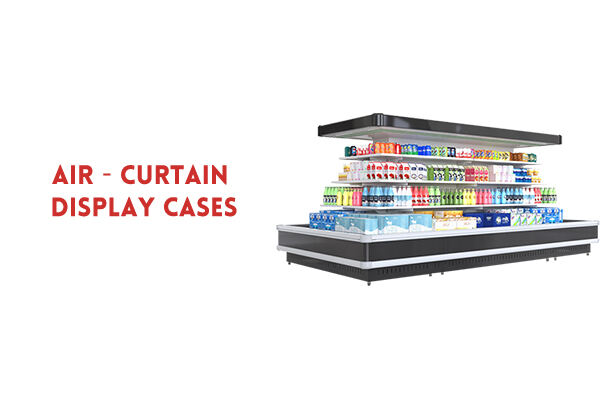
ESSENTIAL REFRIGERATION EQUIPMENT FOR GROCERY STORES
High‐traffic supermarkets require refrigeration units that combat frequent door openings. Island‐style display cases with bottom‐up reverse airflow create a uniform temperature field, limiting internal temperature rise to ≤1 °C after 30‐second door exposure. Humidity‐controlled zones within these units utilize misting systems (95% RH for leafy greens) and dehumidification modules (45% RH for dry goods), extending shelf life by 20%. Advanced models from specialized refrigeration equipment suppliers now integrate real‐time energy consumption displays, empowering stores to optimize operational costs.
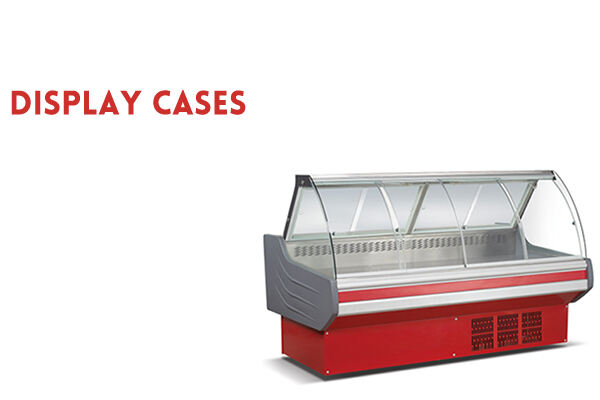
EFFECTIVE REFRIGERATION OPTIONS FOR FOOD TRUCKS
Mobile kitchens operating on limited 3000 W power systems benefit from DC inverter refrigeration units that draw ≤200 W via PWM technology—three times more efficient than AC alternatives. Phase‐change cooling systems using bio‐based materials (e.g., palm oil derivatives) provide 6–8 hours of backup cooling during engine shutdowns, with core temperature stability within ±2 °C. Compact display cases with shock‐absorbing mounts are critical for mobile environments, preventing component fatigue during transit.
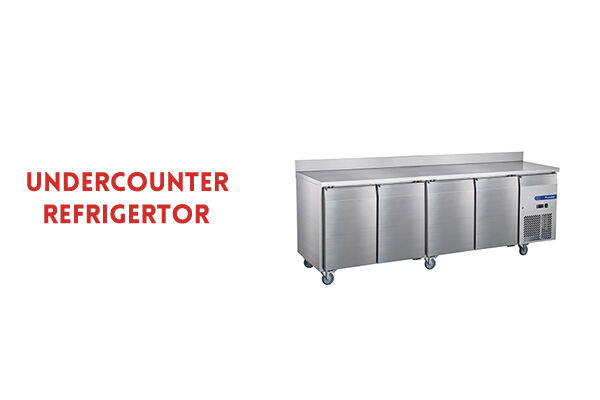
MAKING THE RIGHT CHOICE FOR YOUR COMMERCIAL KITCHEN
The industry is advancing through two frontiers: IoT‐enabled refrigeration units with self‐diagnostic sensors for frost buildup alerts and compressor health monitoring, and CO₂ transcritical systems achieving COP 2.1 at –55 °C,—40% more efficient than fluorocarbon‐based systems. These innovations, championed by progressive refrigeration equipment suppliers, transform cold storage from passive infrastructure to active food safety guardians.
Ultimately, optimal commercial refrigeration equipment operates as a dynamic ecosystem, synchronizing with ingredient respiration rates and kitchen rhythms to strike the perfect equilibrium between preservation efficacy and operational economics.
FAQs
1. Q: What is commercial refrigeration equipment?
A: Commercial refrigeration equipment is designed for foodservice and retail environments, offering heavy-duty cooling solutions with features like precise temperature control and high capacity to meet the demands of restaurants, hotels, and grocery stores.
 After-Sales:
After-Sales:
 EN
EN
 AR
AR
 HR
HR
 NL
NL
 FI
FI
 FR
FR
 DE
DE
 EL
EL
 HI
HI
 IT
IT
 PT
PT
 RO
RO
 RU
RU
 ES
ES
 TL
TL
 ID
ID
 SL
SL
 VI
VI
 ET
ET
 MT
MT
 TH
TH
 FA
FA
 AF
AF
 MS
MS
 IS
IS
 MK
MK
 HY
HY
 AZ
AZ
 KA
KA
 UR
UR
 BN
BN
 BS
BS
 KM
KM
 LO
LO
 LA
LA
 MN
MN
 NE
NE
 MY
MY
 UZ
UZ
 KU
KU









